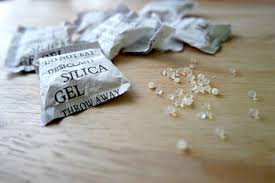What Are Desiccant Packs and Do You Need Them?
Ever wondered what that little sachet is at the bottom of the box that has your brand new shoes in or hidden in one of the little pockets of a new handbag? The search ends here! The little sachets/packs are filled with a material that is known as a desiccant. Desiccant packs are used to keep products in pristine condition between manufacture, transportation and the eventual sale. They ensure that the customer receives their items in the same condition as they left the warehouse in. The unique properties of desiccants allow them to protect products from a number of damaging elements including moisture and air. Read on, to discover how desiccant packs work and examples of how they are used.
How do desiccant packs work?
What makes desiccants so special is their ability to absorb any moisture from their surroundings. They are a type of hygroscopic material, which means they enable and maintain a state of dryness as opposed to a humectant material which promotes moisture retention. The presence of moisture can prove damaging to a whole host of products including medication, electronics and textiles. Water vapour also creates an ideal breeding ground for bacteria, mold and fungus making the use of desiccants vital to prevent harm.
There are a range of desiccant materials; some of the most common include:
– Activated charcoal;
– Calcium chloride;
– Silica gel
– Charcoal sulfate;
– Activated alumina;
– Montmorillonite clay
– Molecular sieve.
As well as their ability to provide a shield against humidity, some desiccant materials have other useful characteristics. For example, activated charcoal eliminates odors and silica gel can change colour to indicate the level of moisture absorbed.
How to choose the desiccant for you
Deciding on which desiccant is right for which product is dependent on a few key factors; how dry does the product need to be? How susceptible is it to humidity and moisture? Understand where the product will be stored and the temperatures/weather fluctuations in that environment and what will the packaging be stored in? Is it likely to be a box relying on the desiccant to do all the work or is there a barrier bag/foil also in use? Desiccant pack manufacturers and sellers will be able to advise which type of desiccant is appropriate for specific products.
Desiccants packs can either be used on their own or in conjunction with other moisture preventing packaging to offer vigorous protection.
Where desiccant could be used
Desiccant packs are used in a variety of industries and they have their uses in the home too! If you’ve ever dropped your phone in water, you will know the pain of waiting for it to dry out (if it ever does). By encasing your phone in desiccant packs you can be assured of it being moisture free and up and running in no time. Other uses in the home include:
- Use the packs in your storage cabinet in the bathroom, especially if you store medicines and vitamins within.
- Store with silver jewellery to keep your valuables from being tarnished.
- Place with gardening seeds that you are storing to keep them mold free.
- Add desiccant packs to your seasonal decoration storage boxes and be content in knowing that they will be in the same condition when you reopen them.
In industry the desiccant packs are irreplaceable; you can find them in the food, pharmaceutical, and technology sectors and we often see them when we open up a new product. What you might not know is that the packs can also be found in the gaps between panes of insulated/soundproof glass. Here the desiccant prevents condensation, ensuring a clear and visible view from the glass. Libraries and museums may use the packs to keep valuable archives intact and available for future use.

